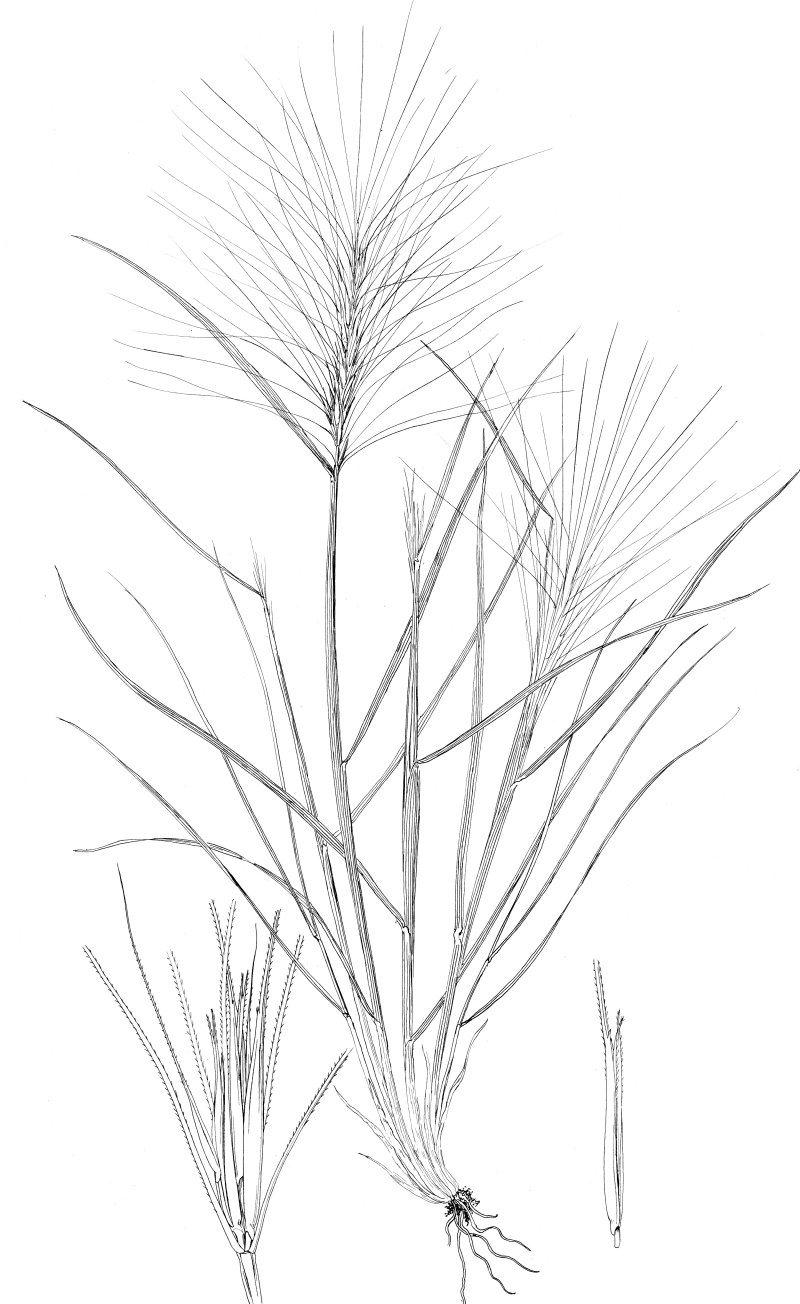
Sitanion hystrix (Nutt.) J.G. Sm. var. brevifolium (J.G. Sm.) C. Hitchc., Bottlebrush Squirreltail
Habit: Tufted perennial. Culms: 10-50 cm. tall, erect to spreading, rather stiff scabrous above. Blades: Flat or at length involute, from glabrous or puberulent to finely white-pubescent throughout, 5-20 cm. long, 1-3 (5) mm. wide, stiffly ascending or spreading, auricled. Sheaths: Usually overlapping, the upper often inflated and enclosing the base of the spikelet, sometimes scabrous. Ligule: Membranous, less than 1 mm. long. Inflorescence: Spike cylindric, 2-7 (10) cm. long, erect, short-exserted or partly included, green or tinged with purple, usually 2 spikelets at a node, at maturity the awns spreading, and the rachis-joint disarticulating. Spikelet: Sessile, two at each node of the articulate rachis, 2-6-flowered, the upper floret reduced. Glumes: 2, very narrow, 1-2-nerved, the nerves extending into scabrous awns, 5-9 cm. long, sometimes bifid to the middle or bearing a bristle or awn along one margin. Lemma: 8-10 mm. long, convex, obscurely nerved, scabrous, smooth or strigose, sometimes glaucous, with a long scabrous awn, 4-9 cm. long, at maturity divergent, the apex sometimes 2-toothed, the upper lemma usually short-awned. Palea: Firm, nearly as long as the body of the lemma, the two keels serrulate. Habitat: Dry hills, plains, open woods and rocky slopes. May-July. Kansas Range: West two fifths: Republic and Cherokee counties. Use: Except while in fruit, good forage. Remarks: Very variable in irregular combinations. The rachis joints attached to the spikelets above blown about by the wind and are a source of mechanical injury to stock, penetrating the mouth, nose and ears, working in by the forwardly barbed awns. Synonyms: Elymus elymoides (Raf.) Swezey ssp. brevifolius (J.G. Sm.) Barkworth, comb. nov. ined. Sitanion longifolium J.G. Sm. Sitanion velutinum Piper